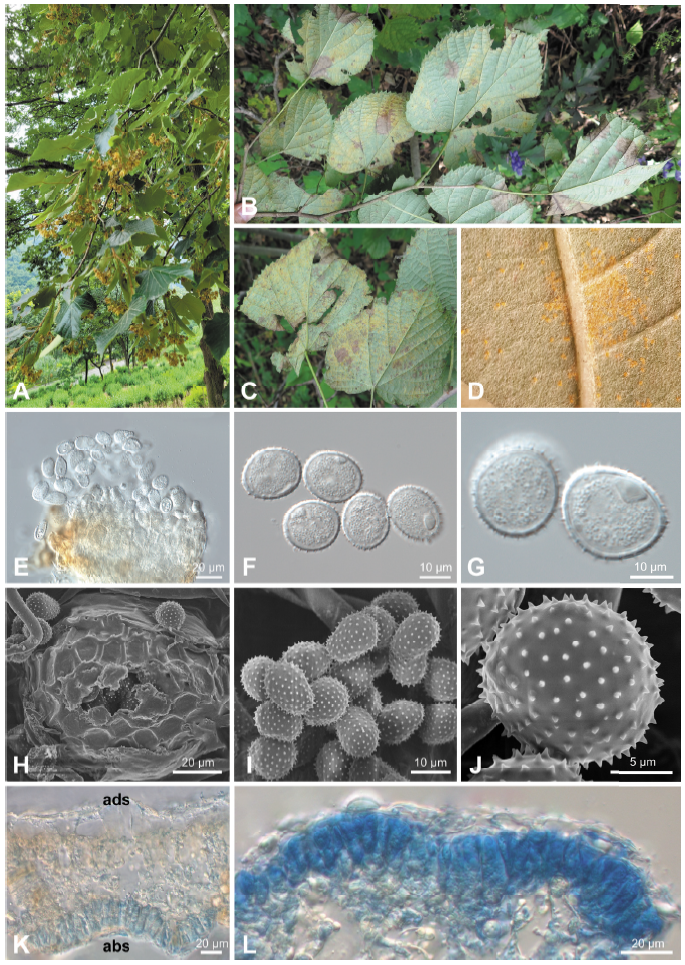Abstract
Tilia mandshurica trees with rust symptoms have consistently been noticed during disease surveys in Korea since 2006. Based on the morphological examination and molecular sequence analysis of the internal transcribed spacer and large subunit of ribosomal DNA,
Figures & Tables

Fig. 1. Rust disease caused by on Tilia mandshurica . (A) Early defoliation of an affected tree. (B and C) Rust symptoms on the lower surface of leaves. (D) Uredinia formed on the lower surface of a leaf. (E) Uredinium under a differential interference contrast (DIC) microscope. (F and G) Urediniospores under a DIC microscope. (H) Uredinium under a scanning electron microscope (SEM). (I and J) Urediniospores under a SEM. (K) Vertical section of telium (abs, abaxial side; ads, adaxial side). (L) Teliospores in a leaf epidermis.


